- This event has passed.
TYC Recently Appointed Academic Talks: Chiara Gattinoni, Wojciek Kopec and Frank Schindler
Venue: iQ East Court (Scape): 0.14, Queen Mary University of London
25 April 2024 @ 2:00 pm – 6:00 pm

Chiara Gattinoni – King’s College London
Electrostatic effects in nanoscale ferroelectrics
The behavior of nanoscale forms of matter, such as thin films or nanocrystal, is strongly influenced by the structure and behavior of their surfaces and interfaces. In nanoscale ferroelectrics, a surface charge arises as a consequence of the ferroelectric polarization itself, and this surface charge leads to an electrostatic instability – the so-called “polar catastrophe” – if it is not compensated. Here we show how the properties of ferroelectric materials at the nanoscale are linked to the compensation mechanism that takes place at their surface. We also demonstrate how the structural and electronic properties of PbTiO3, BiFeO3 and KTaO3 lead to a different compensation mechanism in each case, and we discuss how to harness the properties of these nanoscale materials for applications in microelectronics and catalysis.
Wojciek Kopec – Queen Mary University of London
Understanding ion transport in potassium channels with in silico electrophysiology simulations
Potassium channels are a class of ion channels that play critical roles in many biological functions, such as formation of the membrane potential and mediating electrical signals in excitable cells (e.g. neurons) [1]. Structural and functional studies revealed the main features of these channels, including rapid and selective K+ ion permeation through a narrow selectivity filter (SF) [2], channel opening and closure at the “helix bundle crossing” (activation gate) [3], and distinct gating processes at the selectivity filter [4]. Despite such insights, the molecular mechanisms of permeation, selectivity and gating phenomena remain largely unknown, and are further obscured by the differences between the numerous members of the potassium channel family.
Nowadays, long Molecular Dynamics (MD) simulations allow studying ion channels under applied voltage, enabling a direct comparison with experimentally measured single-channel currents in electrophysiological recordings, thus coining the name ‘in silico electrophysiology’ [5]. I will present such simulations of several potassium channels, all sharing nearly identical SFs. Our simulations reveal that potassium selectivity is directly linked to the level of ion desolvation during permeation [6]. Strict K+selectivity is observed only upon complete desolvation that simultaneously enables high conduction rates through the channel via strong repulsion of ‘naked’ K+ ions. This addressed the long-standing and intriguing question of how potassium channels manage to permeate potassium efficiently yet selectively against slightly smaller sodium. Furthermore, we have recently confirmed the full desolvation of the K+ ions by a combination of solid-state NMR and MD simulations [7,8].
Finally, our simulations revealed that the SF regulates the magnitude of ion flow through the channel, thus gating it on the molecular level. We identified an allosteric coupling that leads to subtle variations in the SF width, affecting the free energy barrier for ion permeation sufficiently to switch it from a closed to open state [9,10].
[1] Hille, Ion channels of excitable membranes, Sinauer 2001.
[2] Zhou et al., Chemistry of ion coordination and hydration revealed by a K+ channel-Fab complex at 2.0 Å resolution, Nature 2001.
[3] Long et al., Atomic structure of a voltage-dependent K+ channel in a lipid membrane-like environment, Nature 2007.
[4] Cuello et al., Structural mechanism of C-type inactivation in K+ channels, Nature 2010.
[5] Kutzner et al., Insights into the function of ion channels by computational electrophysiology simulations, BBA – Biomembranes 2016.
[6] Kopec et al., Direct knock-on of desolvated ions govers strict ion selectivity in K+ channels, Nat. Chem. 2018.
[7] Öster et al., The conduction pathway of potassium channels is water free under physiological conditions, Sci. Adv. 2019.
[8] Öster et al., Direct Detection of Bound Ammonium Ions in the Selectivity Filter of Ion Channels by Solid-State NMR, J. Am. Chem. Soc. 2022.
[9] Kopec et al., Molecular mechanism of a potassium channel gating through activation gate-selectivity filter coupling, Nat. Comm. 2019.
[10] Kopec et al., Interactions between selectivity filter and pore helix control filter gating in the MthK channel, J. Gen. Physiol. 2023.
Frank Schindler – Imperial College London
Crystalline topological matter
Frank will give a pedagogical introduction to some conceptual aspects of quantum materials, which a focus on the topological classification of electronic band insulators.
Organised by:
Martijn Zwijnenburg
m.zwijnenburg@ucl.ac.uk
